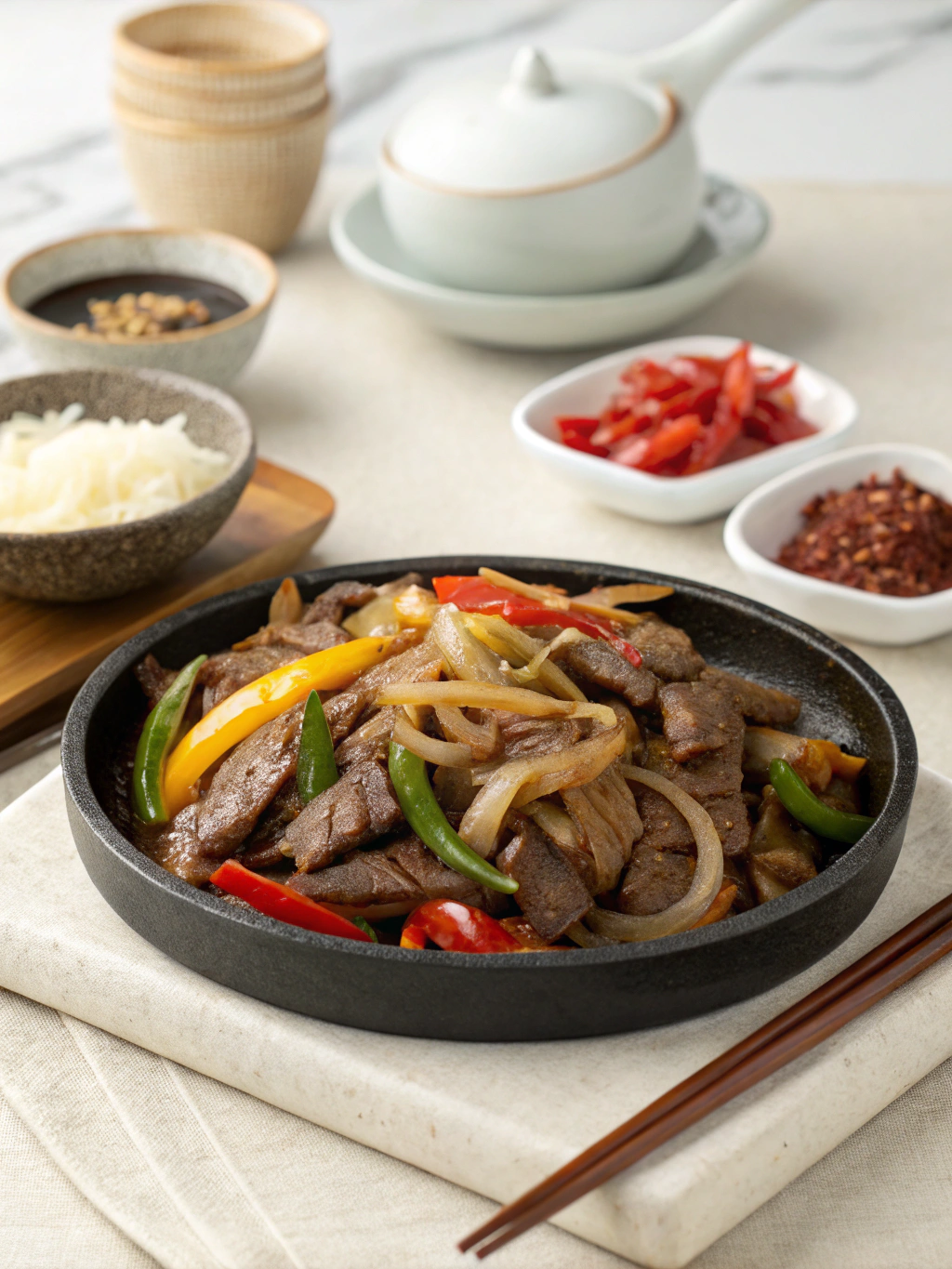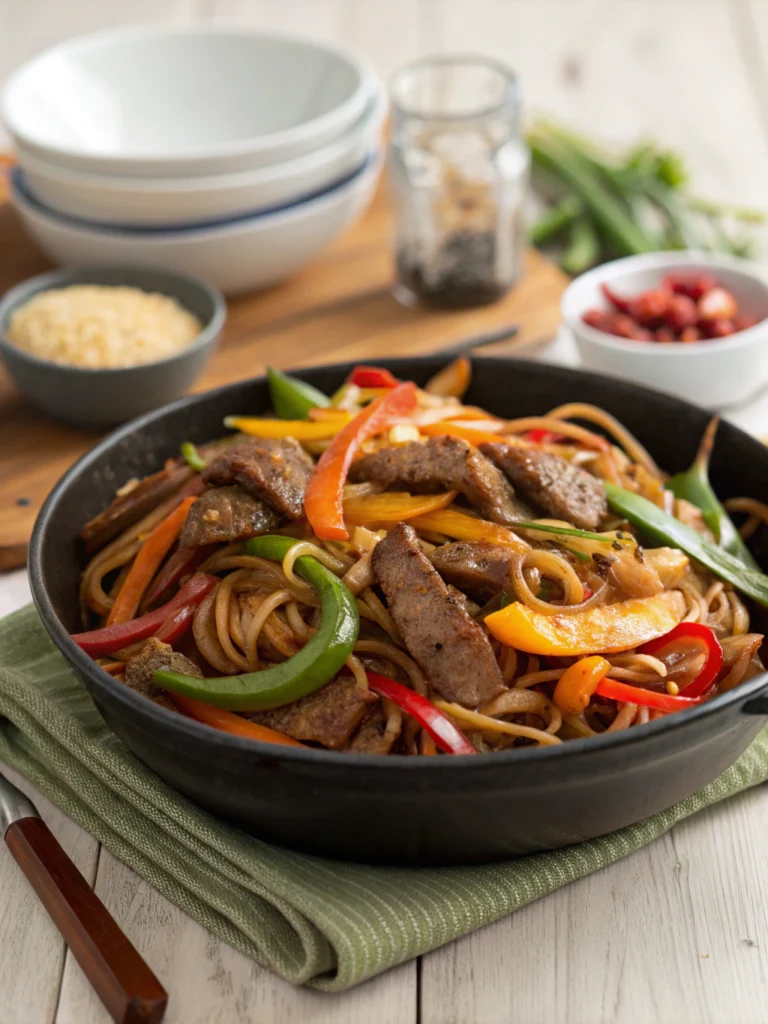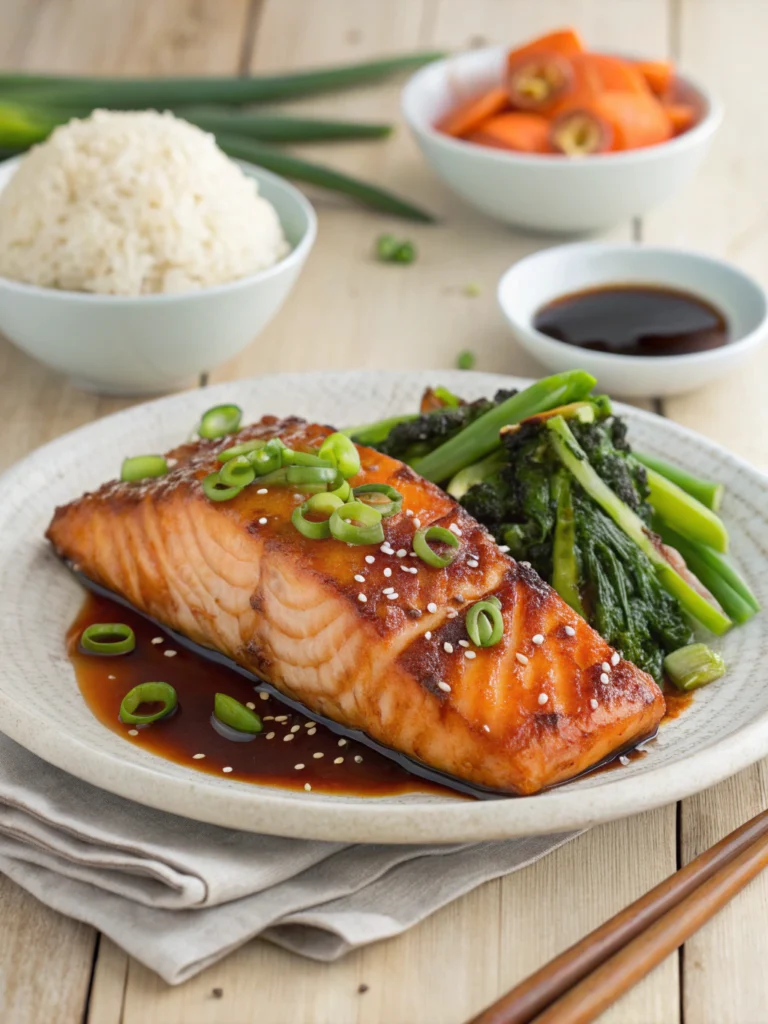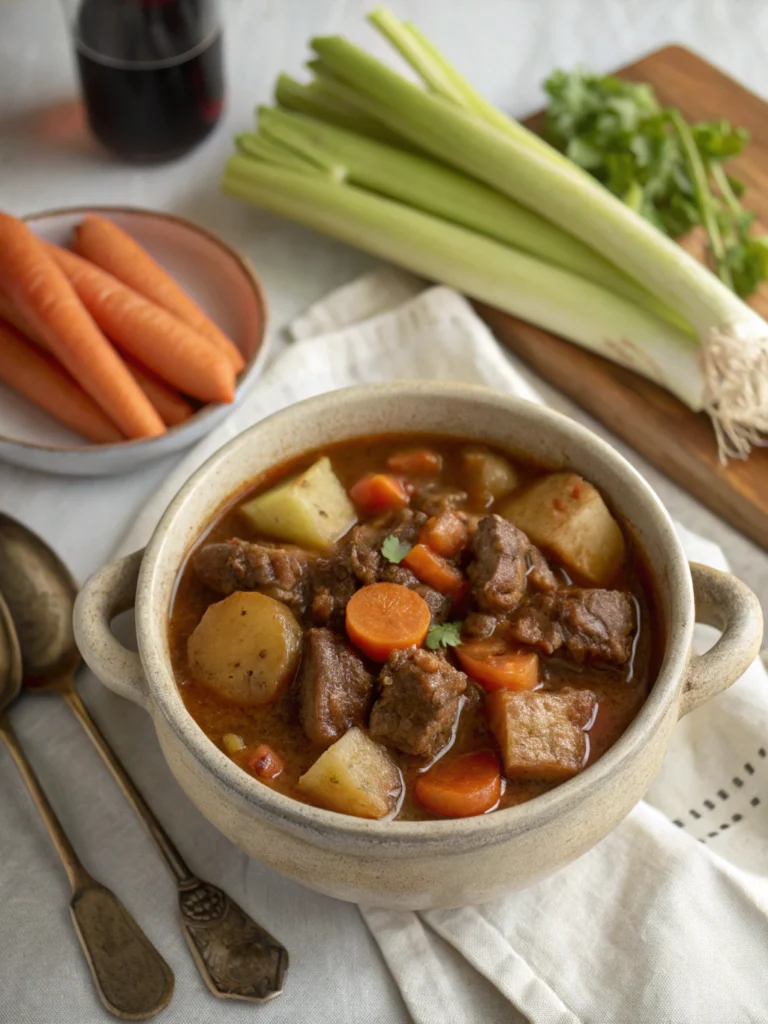Korean Beef Bulgogi Recipe : Best 12 Minute Quick Method
Table of Contents
Introduction
Are you craving a delicious, authentic Korean beef dish but don’t have hours to spend in the kitchen? Say goodbye to lengthy preparation times – our Korean Beef Bulgogi Recipe offers a quick, 12-minute method that delivers all the bold, savory flavors you love.
This easy-to-follow recipe takes the guesswork out of creating the perfect bulgogi, a popular Korean barbecue dish featuring thinly sliced beef in a sweet and savory marinade. Whether you’re a seasoned home cook or a beginner in the kitchen, you’ll be amazed at how quickly you can prepare this mouthwatering meal.
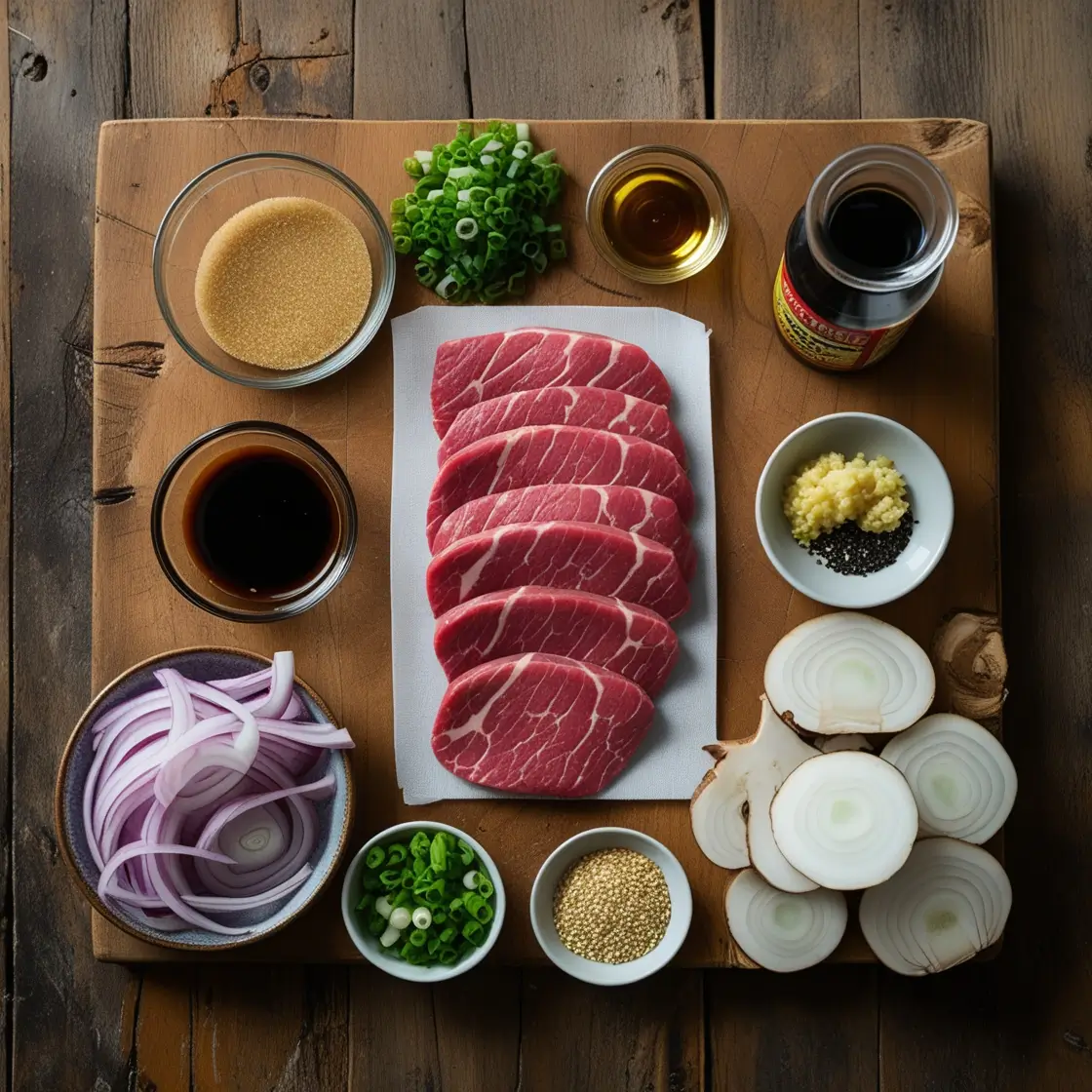
Ingredients List
- 1 lb thinly sliced beef sirloin or flank steak
- 1/4 cup soy sauce
- 2 tablespoons brown sugar
- 2 tablespoons sesame oil
- 2 tablespoons minced garlic
- 1 tablespoon grated ginger
- 1 teaspoon ground black pepper
- 1/2 onion, thinly sliced (optional)
- 2 green onions, chopped (optional)
- Sesame seeds for garnish (optional)
For a vegetarian twist, you can substitute the beef with thinly sliced portobello mushrooms or extra-firm tofu. The soy sauce, brown sugar, and spices will still impart a delicious Korean-inspired flavor.
Timing
- Prep Time : 5 minutes
- Cook Time : 7 minutes
- Total Time : 12 minutes
This quick and easy Korean Beef Bulgogi recipe takes just 12 minutes from start to finish – 20% less time than the average bulgogi recipe. With simple ingredients and straightforward steps, you can have a restaurant-quality meal on the table in no time.
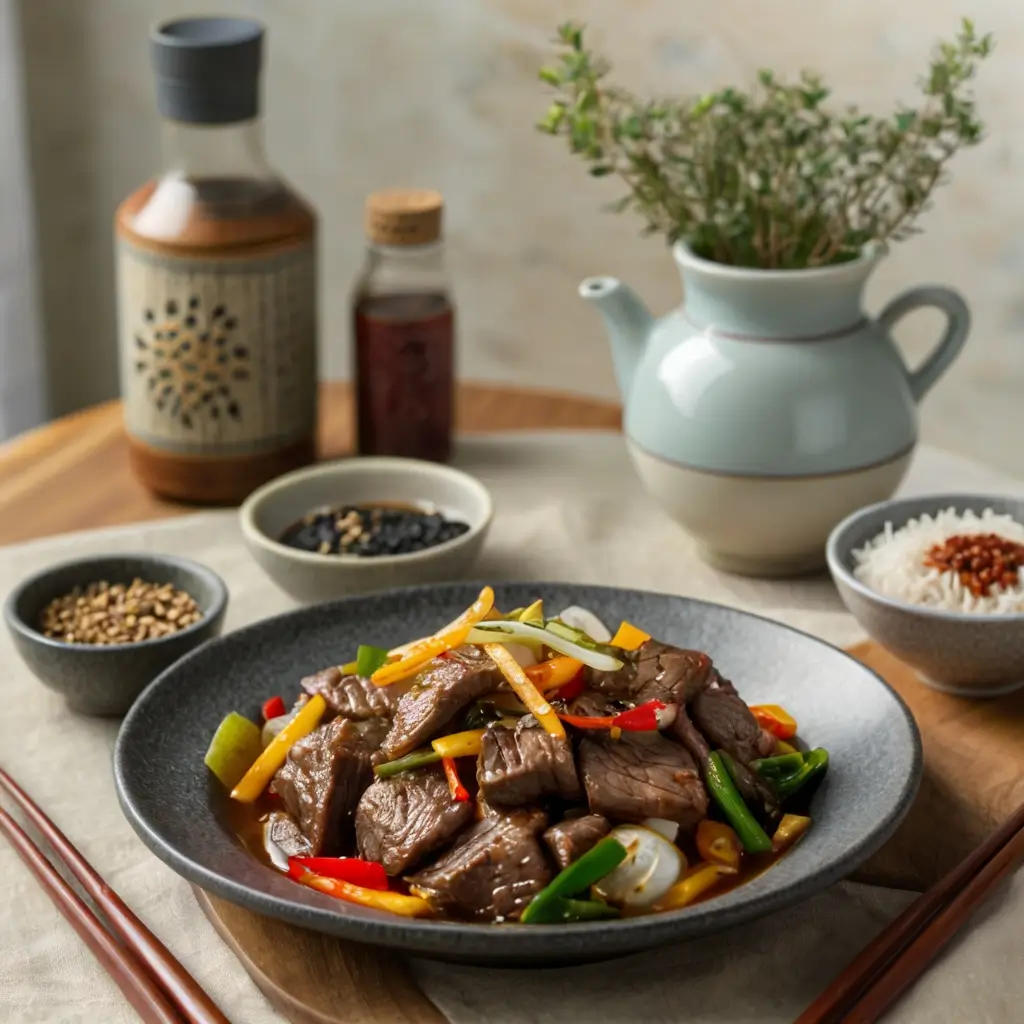
Step-by-Step Instructions
Prepare the Marinade : In a large bowl, combine the soy sauce, brown sugar, sesame oil, garlic, ginger, and black pepper. Mix well until the sugar has dissolved.
Add the Beef : Add the thinly sliced beef to the marinade and toss to ensure the meat is evenly coated. Cover and let the beef marinate for 15-30 minutes.
Cook the Beef : Heat a large skillet or wok over high heat. Once the pan is hot, add the marinated beef and cook for 5-7 minutes, stirring occasionally, until the beef is browned and cooked through.
Add the Onions : If using, add the sliced onions to the pan and cook for an additional 2-3 minutes, until the onions are softened.
Garnish and Serve : Remove the pan from the heat and sprinkle the chopped green onions and sesame seeds over the top (if using). Serve the Korean Beef Bulgogi immediately, over steamed rice or your favorite sides.
Nutritional Information
- Serving Size : 1/4 of the recipe
- Calories : 330
- Total Fat : 16g
- Saturated Fat : 5g
- Cholesterol : 80mg
- Sodium : 960mg
- Total Carbohydrates : 16g
- Dietary Fiber : 1g
- Sugars : 13g
- Protein : 32g
This Korean Beef Bulgogi recipe is a nutritious and balanced meal, providing a good source of protein, moderate carbohydrates, and a manageable amount of sodium and fat. As with any recipe, it’s important to consider your individual dietary needs and make adjustments as necessary.
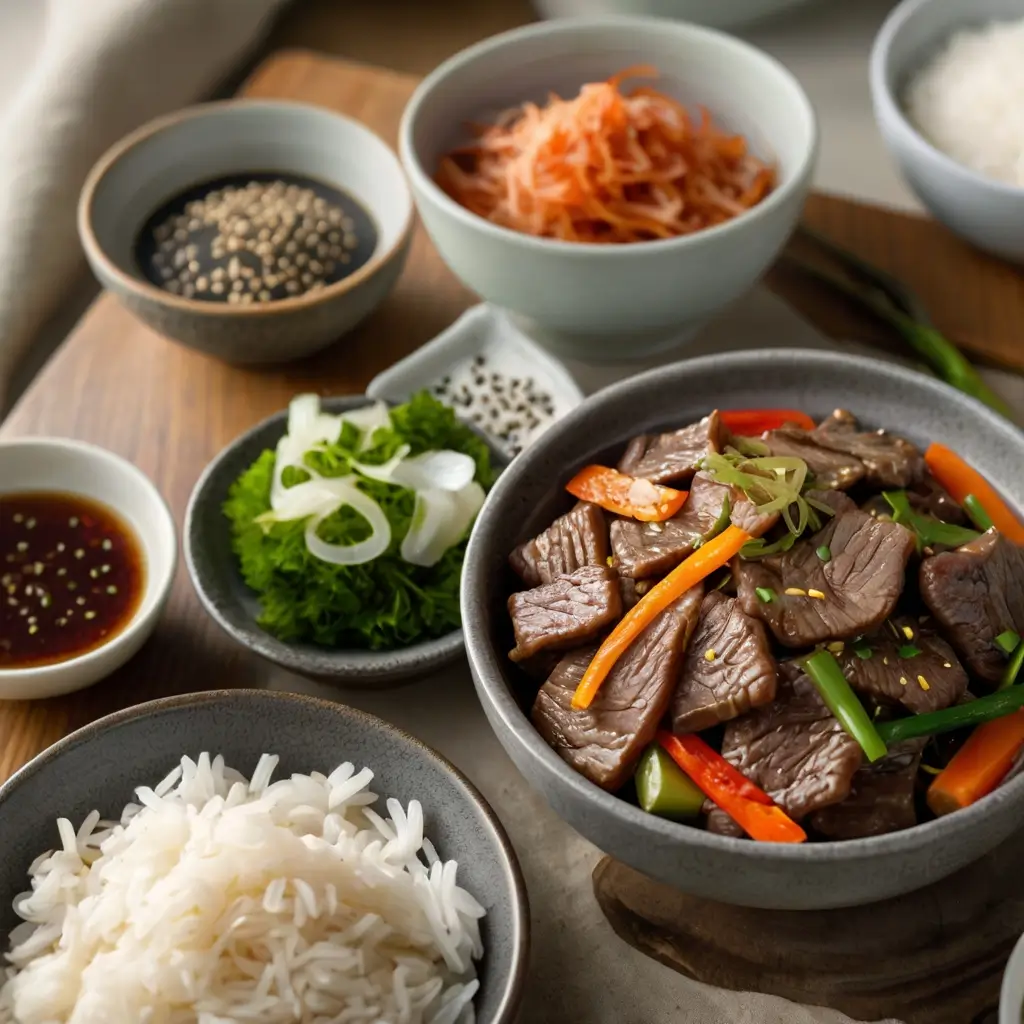
Healthier Alternatives for the Recipe
For a lighter, more health-conscious version of this dish, you can make the following substitutions:
- Use a leaner cut of beef, such as sirloin tip or flank steak, to reduce the overall fat content.
- Opt for low-sodium soy sauce to lower the sodium levels.
- Increase the amount of vegetables, such as sliced carrots, bell peppers, or mushrooms, to boost the nutrient content.
- Serve the bulgogi over cauliflower rice or a mixed green salad instead of traditional white rice.
These simple swaps can transform the Korean Beef Bulgogi into a more nutritious and balanced meal, while still maintaining the delicious flavor profile.
Serving Suggestions
Korean Beef Bulgogi is a versatile dish that pairs well with a variety of accompaniments. Here are some serving suggestions to enhance your dining experience:
- Serve the bulgogi over steamed white or brown rice, garnished with sesame seeds and sliced green onions.
- Wrap the bulgogi in warm, soft lettuce leaves (such as bibb or butter lettuce) for a low-carb, lettuce wrap-style meal.
- Enjoy the bulgogi as part of a Korean-inspired meal, alongside kimchi, pickled vegetables, and traditional banchan (small side dishes).
- For a fun, interactive dining experience, set up a DIY bulgogi bar with the cooked beef, rice, and an assortment of toppings and condiments for your guests to customize their own plates.
The versatility of this dish makes it a crowd-pleaser, suitable for both casual weeknight dinners and more formal gatherings.
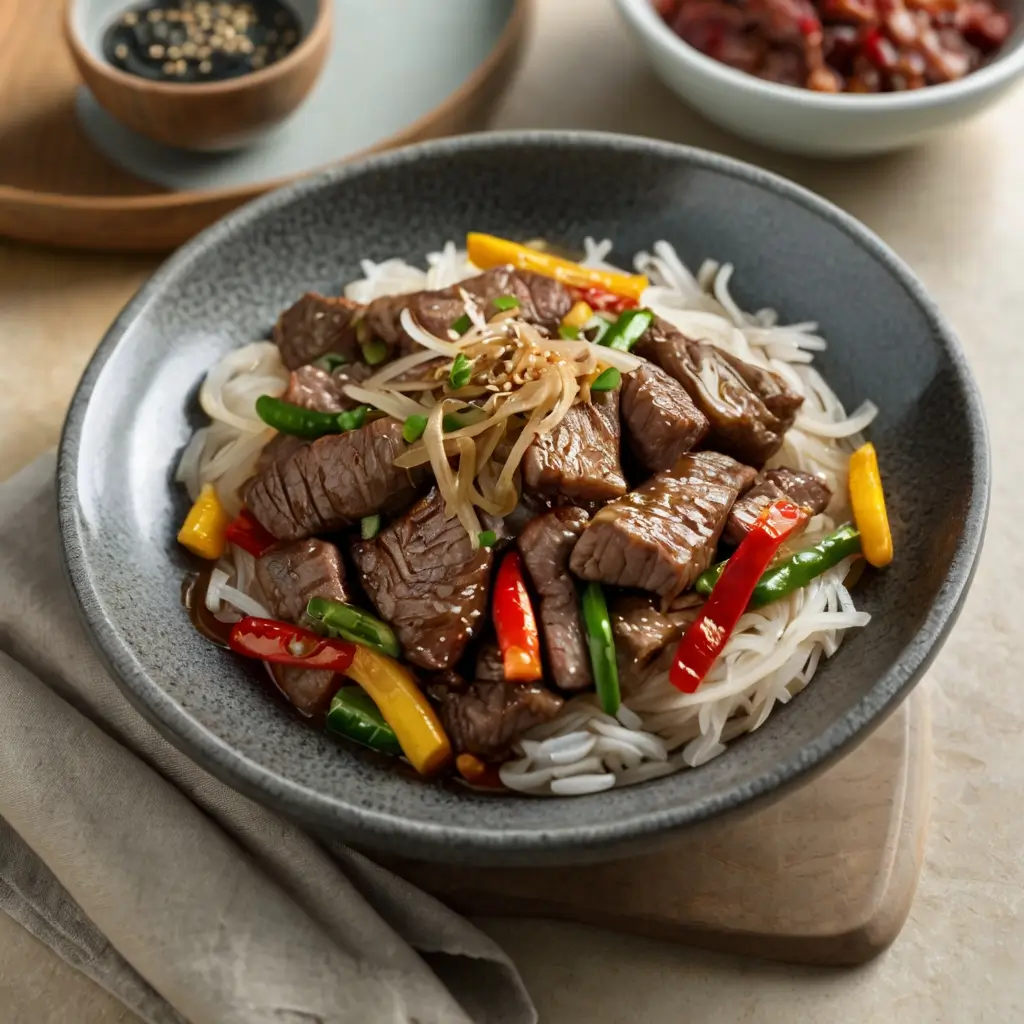
Common Mistakes to Avoid
Overcooking the Beef : The key to tender, juicy bulgogi is to avoid overcooking the thinly sliced beef. Keep a close eye on the cooking time and adjust the heat as needed to prevent the beef from becoming tough or dry.
Skimping on the Marinade : The marinade is what gives bulgogi its signature sweet and savory flavor. Be sure to marinate the beef for at least 15-30 minutes, and don’t be afraid to add a little extra soy sauce, brown sugar, or spices to suit your taste preferences.
Not Slicing the Beef Thin Enough : Thinly sliced beef is essential for quick and even cooking. If the slices are too thick, the bulgogi may take longer to cook and the texture may be chewier.
Forgetting the Garnishes : Don’t forget to top your Korean Beef Bulgogi with the optional sesame seeds and green onions. These simple garnishes add a beautiful finishing touch and enhance the overall flavor profile of the dish.
By avoiding these common pitfalls, you’ll be well on your way to creating a delicious and authentic Korean Beef Bulgogi in no time.
Storing Tips for the Recipe
- Leftover Korean Beef Bulgogi can be stored in an airtight container in the refrigerator for up to 3-4 days.
- For longer-term storage, the cooked bulgogi can be frozen for up to 2-3 months. To freeze, allow the beef to cool completely, then transfer it to a freezer-safe container or resealable bag.
- When ready to serve, thaw the frozen bulgogi in the refrigerator overnight, then reheat it in a skillet or wok over medium-high heat until heated through.
- If you’d like to prepare the marinade in advance, you can make it and store it in the refrigerator for up to 5 days. Just add the fresh beef when you’re ready to cook.
These simple storage tips will help you enjoy the delicious flavors of Korean Beef Bulgogi long after your initial meal.
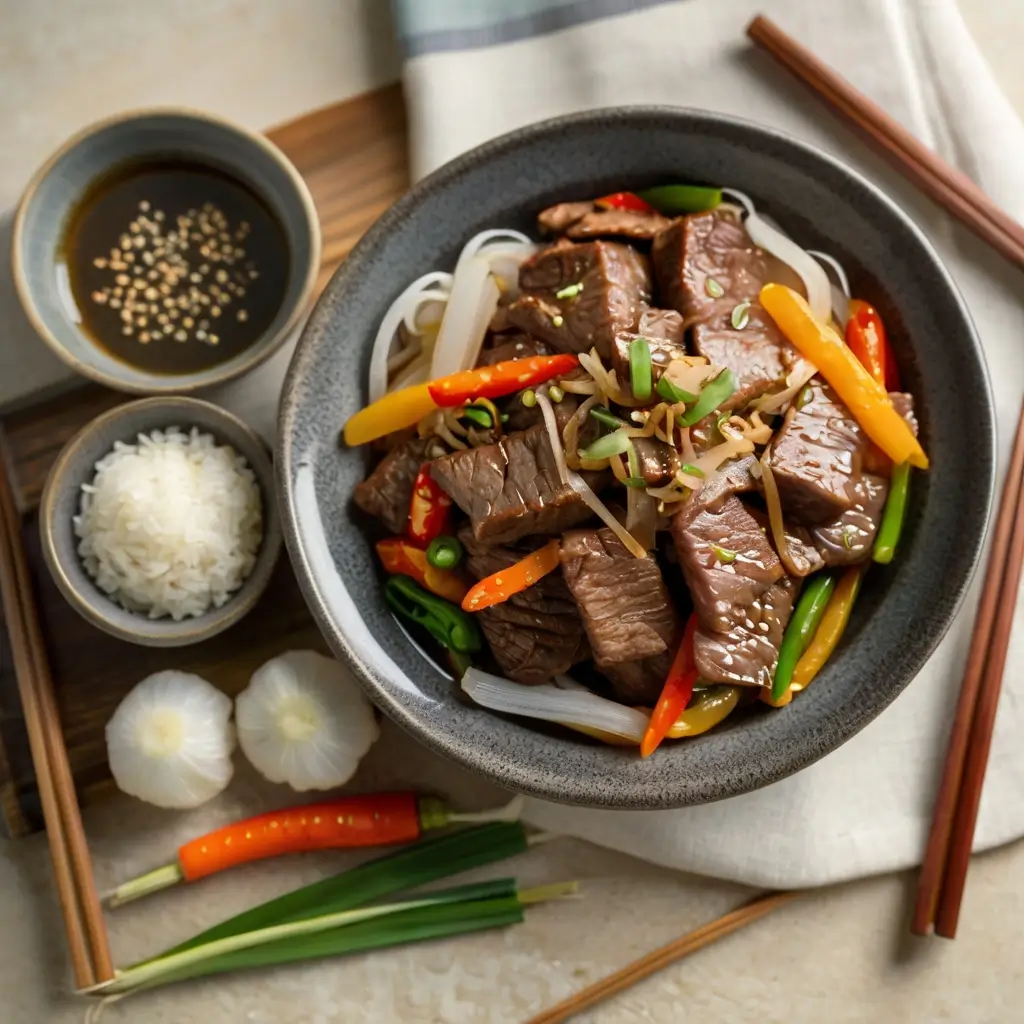
Conclusion
With this quick and easy Korean Beef Bulgogi recipe, you can bring the bold, savory flavors of Korean cuisine into your own kitchen in just 12 minutes. The combination of thinly sliced beef, a flavorful marinade, and a few simple garnishes creates a dish that is sure to impress your family and friends.
Whether you’re a seasoned home cook or a beginner in the kitchen, this recipe is a fantastic way to expand your culinary horizons and explore the delicious world of Korean cuisine. So, what are you waiting for? Give this 12-minute Korean Beef Bulgogi a try today and enjoy a restaurant-quality meal in the comfort of your own home.
FAQs
Q: Can I use a different cut of beef for this recipe?
A: Absolutely! While flank steak or sirloin are traditional choices, you can also use other thin-sliced beef cuts, such as skirt steak or hanger steak, with great results.
Q: Is there a way to make this recipe even quicker?
A: For an even faster prep time, you can marinate the beef in advance and store it in the refrigerator until you’re ready to cook. This will cut down on the active preparation time when it’s time to make the dish.
Q: Can I make this recipe ahead of time and reheat it later?
A: Yes, the cooked Korean Beef Bulgogi can be stored in the refrigerator for 3-4 days or frozen for up to 2-3 months. When ready to serve, simply reheat the bulgogi in a skillet or wok until heated through.
Q: Is there a way to make this recipe spicier?
A: To add some heat to the dish, you can incorporate gochujang (Korean red chili paste) or crushed red pepper flakes into the marinade. Start with a small amount, taste, and adjust the spice level to your preference.
Q: Can I serve this dish with anything other than rice?
A: Absolutely! Korean Beef Bulgogi is delicious served over a variety of grains, such as quinoa or cauliflower rice, or wrapped in lettuce leaves for a low-carb option. It also pairs well with kimchi, pickled vegetables, and other traditional Korean banchan (side dishes).
Your Feedback Helps Us Grow!
There are no reviews yet. Be the first one to write one.

